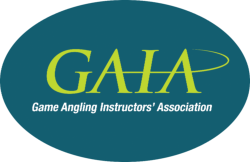Choosing the right fly
Hmmm. What fly should I to put on? Learning a bit about insects (entomology) will help you to make the right choice.
There are four main groups of flies on which Trout and Grayling concentrate. To get started let's look at the "up winged flies" or ephemeroptera. There are a number of specific stages that these insects go through. Fish are triggered by these stages and when you learn to spot them occurring it will increase your likelyhood of tricking a fish no end. In the diagram below you will see the different stages that the fly, in this case a "Large Dark Olive" develops through it's life cycle.

Weighted nymphs are fished deep in the water if not near the bottom of the river, unweighted nymphs can be fished when the nymphs move from the deeper depths to the mid levels of the stream further towards the surface in anticipation of hatching.

Some patterns represent emerging duns which are fished in or on the surface, often part nymph and part dry fly.
Duns or true dry flies imitate flies that have died, or are near to death, following the failure to emerge completely from the nymphal shuck or those that become trapped by the surface tension of the water.
Once the hatched fly has left the water many species complete metamorphosis, (for interest this transitional change is known as an instar) to become sexually mature (Imago) where they will be seen dancing in clouds above the banks. Once male and female have mated the females return to the water to deposit their eggs and die through exhaustion. This is often referred to as a fall of spinners and can result in fantastic sport for often-larger fish. These falls occur when the light is faded, either at the end or beginning of the day.

So, as you can see, for just this one category of fly, the "up winged flies" or ephemeroptera, we now have several promising patterns to choose from. If we can spot the stages of its life cycle occuring then we stand a good chance of picking a fly that will, with a little careful puppeteering, fool a fish into taking. Hooking up? Well that's another trick altogether!
GAIC single handed casting instructors and fly dressing instructors are very knowledgeable about these things. If your interested in learning more why not contact a local instructor?
If you would like a GAIA Instructor to help you put theory into practice, use Find An Instructor below to get in touch with your local GAIA instructor and have a chat about your requirements.
Enter a city, town, place or postcode into the box below to find nearby GAIA Instructors.

